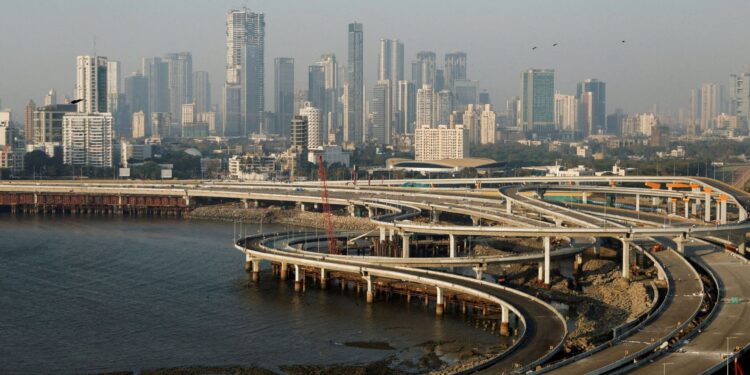The Indian government has reduced its economic growth expectations during the current fiscal year ending next March to 6.4%, which is the lowest rate since the outbreak of the Corona pandemic, according to a report issued by Bloomberg.
The figure issued by the Ministry of Statistics represents a sharp decline compared to the 8.2% growth rate recorded in the previous fiscal year, and slightly lower than the previous government forecast of 6.5%.
Economic challenges
This slowdown reflects the challenges of maintaining India’s position as one of the fastest growing economies in the world. With the economy relying on private and government spending for 60% of GDP, growth has been affected by a decline in consumer spending, high inflation rates, and delayed implementation of government expenditures due to the prolonged elections, according to the agency.
“Achieving 6.4% growth requires strong growth of 6.8% in the second half of the fiscal year, which seems very ambitious,” Anubhuti Sahi of Standard Chartered Bank explained to Bloomberg.
Despite the challenges, private consumption is expected to grow by 7.3% compared to 4% last year, while government spending is expected to rise to 4.1% from 2.5% in the previous year.
Comparisons and predictions
While Goldman Sachs and Nomura Holdings expect a lower growth of 6%, the Reserve Bank of India (RBI) remains more optimistic with a growth forecast of 6.6%.
This difference, according to Bloomberg, reflects the uncertainty surrounding the Indian economy. The new governor of the central bank, Sanjay Malhotra, faces increasing pressure to lower interest rates, which requires a change in the monetary policies followed by his predecessor.
“The government’s lower expectations compared to the central bank’s expectations will push the latter to consider cutting interest rates during the next meeting in February,” said Madhvi Arora of Emkay Financial Services.
Key economic indicators
- Public and private spending: While public spending has declined, rural consumption is expected to remain positive thanks to a good monsoon season.
- Inflation and interest rates: 10-year government bond yields stabilized at 6.75%, indicating stability in financial markets.
- Global pressures: Trade tensions and tariffs proposed by US President-elect Donald Trump are expected to put further pressure on India’s growth, limiting trade and investment.
The advanced GDP estimates, which are key to budget planning, come ahead of Finance Minister Nirmala Sitharaman’s expected speech in February.
Analysts believe that this budget will focus on rearranging spending priorities to stimulate growth. Bloomberg Economics stressed the need for “comprehensive political support” to stabilize the fragile economy.



